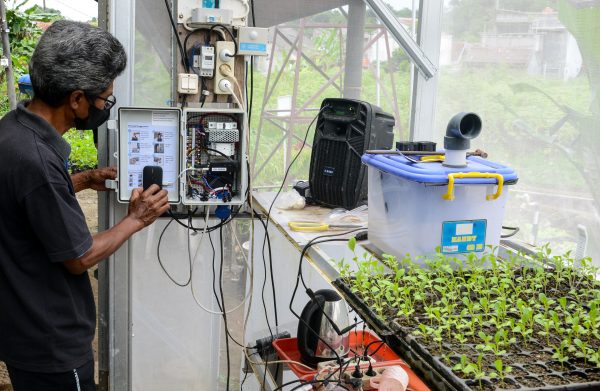In the lead up to the November G20 Leaders’ Summit, Indonesia, assisted by the Asian Infrastructure Investment Bank (AIIB), launched the Compendium of Case Studies on Financing Digital Infrastructure. At the G20 Summit, all G20 member states agreed to endorse the Compendium to narrow the digital divide.
Significant hype now surrounds the idea and implementation of innovative PPP-based financing for digital infrastructure. But these alternatives are not a template that can be readily cut and pasted.
Submarine cable investment is a good case in point. Given Indonesia’s position as an archipelagic country, submarine cables are critical digital infrastructure to enable international communications and data transfers. This infrastructure is the backbone of the digital economy, financial markets and employment. A report by the consulting firm Analysys Mason projected that submarine cable investment would increase the number of internet users in Indonesia by 35 per cent. It would also reduce latency — an important factor in data transmission on the internet network — by up to 14 milliseconds and increase internet bandwidth by 34 per cent.
Indonesia has 217 submarine cable segments, but these are not sufficient to boost internet access in remote areas. They also lack redundancy, meaning that the impact of damaged cables can barely be managed. There is increased interest from foreign companies to build submarine cables, but financial risks are a barrier to investment.
The submarine cable network is a capital-intensive infrastructure investment not only during the installation period, but also during operation. Capital expenditure and operational expenditure often become disproportionately high, with overlapping regulations and authorities.
Companies often face regulatory hurdles at the early phase of development and during maintenance. The permit application process for submarine cable repairs often takes more than 80 days in Indonesia, while internationally it typically takes one to four weeks to reach and repair faults. A cut to the Australia Singapore Cable was restored in just 13 days in 2021.
Delays and unclear processes regarding licensing, as well as problems caused by the securitisation of submarine cables, further exacerbate risks that not only affect companies’ operational costs, but also impact large-scale connectivity. Slow cable repair disrupts critical systems like email services, logistics, airlines and banking. In September 2021, damage to Indonesia’s Jasuka cable, which links Java, Sumatra and Kalimantan, led to slow internet connections in major cities in Indonesia for a month, adversely affecting economic activity.
The Ministry of Marine Affairs and Fisheries issued a decree in 2022 concerning procedures for the construction and placement of buildings and installations at sea, which aims to provide legal certainty for companies, especially for licensing and business processes. While the regulation was welcomed by businesses, its implementation still needs more active collaboration and dialogue between government and business stakeholders.
In recent years, data centres have become a priority for Indonesia and have generated business opportunities for domestic and foreign investors. The data centre business is a new source of foreign exchange reserves especially given that Singapore has imposed a moratorium on the development of large-scale data centres.
As a major digital hub in the Asia Pacific, data centres account for 7 per cent of Singapore’s total electricity consumption. Until recently, Singapore had only approved the construction of data centres with an energy consumption of around five megawatts to slow down the growth of the sector.
Taking advantage of this situation, the Indonesian government has loosened investment barriers and provided incentives to attract investors. Data centres with an investment of more than 34 million dollars will receive a tax exemption of up to 100 per cent.
This is not without social costs. Although data centres play an important role in supporting digitisation and expanding job opportunities, data centres are highly energy-intensive. This has the potential to cause negative impacts on the environment if not properly regulated.
Innovative financing and varied technology options are available, but Indonesia still has a long way to go to use them to their full potential. The government needs to take steps to address risk management practices, not only in terms of price formation, but also from regulatory, social and environmental risks.
Indonesia’s Ministry of Communication and Information Technology through its 2020–2024 Strategic Plan introduced various steps to promote policies that encompass the development and implementation of cloud computing, construction and utilisation of national data centres. The plan also covered the implementation of 4G networks and the construction of base transceiver stations for rural areas, as well as fibre optic connections for the development of smart cities.
Unfortunately, this Strategic Plan has not yet been followed by a road map elaborating on technical policies and strategic steps that will enable efficient ways to plan, coordinate and prioritise digital infrastructure development across different ministries and between key stakeholders. Greater coordination of infrastructure investments, priority setting and strategic planning are imperative to minimise risks and, ultimately, boost sustainable and inclusive digital infrastructure projects.
Trissia Wijaya is Head of Economic Opportunities Research in the Center for Indonesian Policy Studies and Honorary Postdoctoral Fellow at the Asia Research Centre, Murdoch University, Australia.

